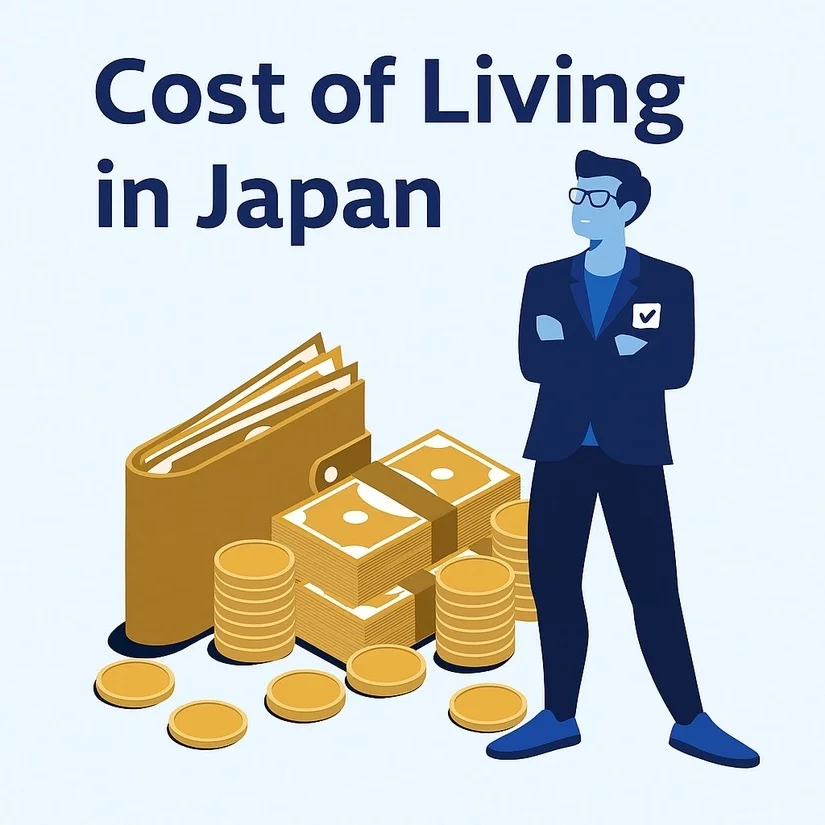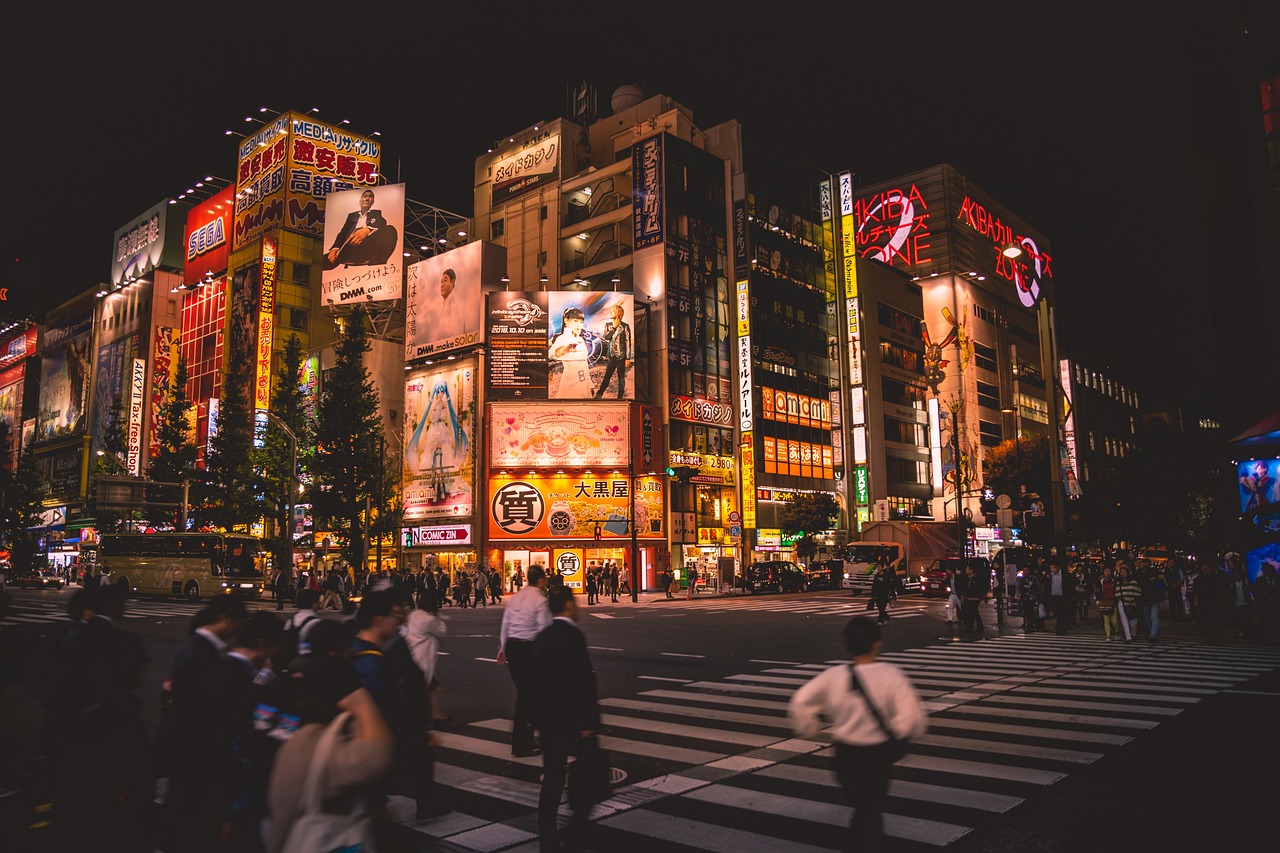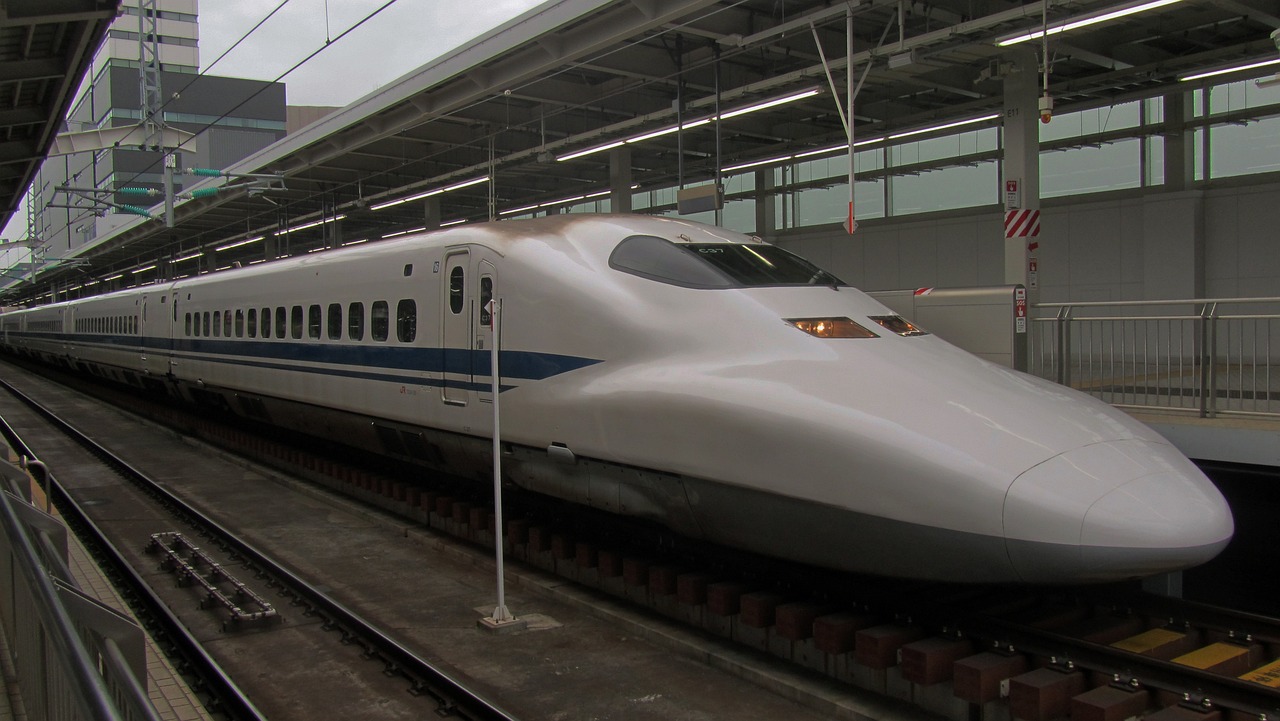The cost of living in Japan in 2025

Japan is often perceived as one of the most expensive countries in the world, but the cost of living can vary significantly depending on location, lifestyle, and financial priorities. Whether planning a short stay, a study abroad program, or a long-term relocation, understanding daily expenses is essential. This guide breaks down the key components of the cost of living in Japan in 2025.
1. Housing Costs
Housing is typically the largest monthly expense for residents in Japan. Prices vary dramatically depending on location:
Tokyo (Most Expensive)
- Studio apartment (20–30m²): ¥70,000 to ¥120,000/month
- 1LDK or 2DK: ¥120,000 to ¥180,000/month

Osaka & Other Urban Areas
- Studio apartment: ¥50,000 to ¥80,000/month
- 1LDK or 2DK: ¥80,000 to ¥120,000/month
Rural Japan
- Rental (entire house): ¥30,000 to ¥50,000/month
- Buying a house: From ¥7,000,000 to ¥20,000,000 for larger or newer properties
Additional monthly fees may include:
- Maintenance/management fees: ¥2,000 to ¥7,000
- Utilities (electricity, gas, water): ¥8,000 to ¥14,000
Money-saving tip: Rent prices drop significantly for properties located 10–15 minutes further from train stations. Choosing a location just slightly outside the city center or using a bicycle can reduce monthly housing costs by up to 30%.
2. Food Expenses
Supermarket Prices (2025 Average)
- 1L Milk: ¥190
- 1 dozen eggs: ¥220
- 1kg rice: ¥530
- 1 loaf of bread: ¥170
- Chicken breast (300g): ¥370
- Vegetables (per item): ¥80–¥120
Dining Out
- Budget ramen or donburi: ¥500–¥800
- Lunch at a chain restaurant: ¥800–¥1,100
- Izakaya dinner: ¥2,000–¥4,000/person
Monthly Grocery Estimate
- Single person: ¥20,000–¥30,000
- Couple or small family: ¥40,000–¥60,000
3. Transportation Costs

Japan has one of the most efficient public transportation systems in the world.
Urban Transport
- Train fare (one way): ¥180–¥240
- Monthly commuter pass: ¥10,000–¥15,000
Intercity Travel
- Shinkansen (Tokyo to Osaka): ¥14,000 (one way)
- Highway buses: ¥4,000–¥7,000
Other Options
- Bicycle: Highly popular and economical
- Taxis: ¥600–¥800 base fare + extras
Money-saving tip: Owning a bicycle significantly reduces transport expenses and offers more freedom for local errands and commuting.
4. Owning a Car in Japan
Owning a car in Japan involves a variety of mandatory fees and recurring costs, making it a relatively expensive option compared to using public transport:
- Vehicle Inspection (Shaken): ¥80,000 to ¥120,000 every two years
- Mandatory Insurance (Jibaiseki): Around ¥20,000/year
- Optional Comprehensive Insurance: ¥30,000 to ¥100,000/year
- Automobile Tax: ¥30,000 to ¥50,000/year
- Parking Space Rental (city): ¥10,000 to ¥40,000/month
- Toll Roads: ¥3,000–¥10,000 per trip
- Fuel Costs: ¥160–¥180 per liter
That said, a new compact car typically starts around ¥1.3 million, and many used options cost less than ¥1 million.
5. How Much is a McDonald's Meal in Japan?
The price of a Big Mac meal is often used internationally as a rough benchmark of purchasing power and living costs. In Japan:
- Big Mac alone: ¥450
- Big Mac Set (fries + drink): ¥750–¥800
- Standard Cheeseburger: ¥200
- Value meal (e.g., Teriyaki Set): ¥600–¥750
While more affordable than in some Western countries, McDonald's prices in Japan reflect the general cost-efficiency in dining and groceries across the country.
6. Health Insurance & Medical Costs
- National Health Insurance (NHI): ¥3,000–¥8,000/month (based on income)
- Employer Insurance: Deducted from salary
- Doctor Visit: ¥1,000–¥2,000 after insurance
- Dental Cleaning: ¥1,000–¥2,500
7. Miscellaneous Monthly Expenses
- Mobile plan: ¥2,500–¥5,000
- Internet: ¥4,000–¥6,000
- Gym membership: ¥6,000–¥8,000
- Entertainment: ¥1,000–¥3,000/session
8. Example Monthly Budget Ranges
| Lifestyle | Housing | Food | Transport | Other | Total (Approx.) |
|---|---|---|---|---|---|
| Budget Solo (rural) | ¥35,000 | ¥20,000 | ¥3,000 | ¥7,000 | ¥65,000 |
| Average Solo (city) | ¥75,000 | ¥30,000 | ¥8,000 | ¥10,000 | ¥123,000 |
| Couple (urban) | ¥90,000 | ¥50,000 | ¥15,000 | ¥15,000 | ¥170,000 |
| Family of 3 (suburb) | ¥120,000 | ¥60,000 | ¥20,000 | ¥20,000 | ¥220,000 |
Final Thoughts
Living in Japan can be affordable or expensive depending on location and lifestyle. Cities like Tokyo offer international convenience and vibrancy, but at a cost. Meanwhile, rural Japan offers peace, space, and cost-effective living. With planning and awareness — such as using a bicycle, living slightly outside central areas, and cooking at home — it is possible to reduce expenses significantly. A comfortable lifestyle in Japan is accessible to many, whether solo professionals, students, or families.
